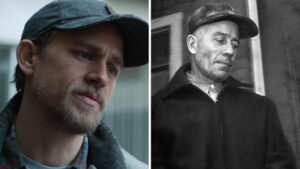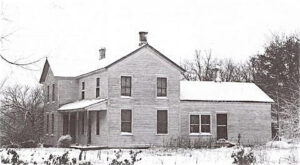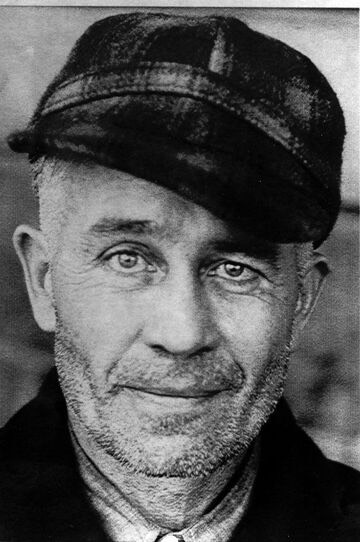By: Brian Maddox
Birmingham, AL (The Hollywood Times) 10/09/2024-
WARNING:
GRAPHIC CONTENT AHEAD.
READ AT YOUR OWN DISCRETION.

To preface this twisted tale, I’d like to begin with a bizarrely significant passage from “Deviant: The Shocking True Story of Ed Gein, the Original Psycho” by true crime writer and author, Harold Schecter:
“He can barely control himself, so powerful is his craving. Clearly it has been too long since he last made a visit. Small midwestern towns are not renowned for their nightlife, but Eddie knows at least three places nearby where the women are always waiting and available. He climbs into his pickup and heads off into the night.”
When it comes to the year of 1957, we’re reminded of how purely spartan the era truly was in regard to technology, media and the like. Anything revolving around the now fiercely coveted “true crime” genre was essentially unheard of, that was until the horrors of a local Plainfield Wisconsin “odd jobber” named Ed Gein came to terrifying light.
His infamous reputation stems from numerous spine chilling and ghoulish proclivities involving the likes of late-night grave robbing, peculiar methods of taxidermy and one other such activity that was widely adopted as the basis for a couple iconic horror movie villains.
Born on August 27, 1906, in La Crosse Wisconsin to George and Augusta Gein, Edward Theodore Gein was destined to become synonymous with some kind of odd occurrence later on in life, due to an extremely volatile upbringing in a household paired with an alcoholic father and a mother who ruled the roost with her iron fisted religious propensities. Anything or anyone appearing impure or immoral by Augusta’s militantly pious discernment was immediately prohibited from the innocent eyes and ears of her young sons, Henry and Eddie.
Shortly after George Gein passed away from heart failure in 1940, Henry and Ed were left to tend the vast 155-acre farm in his stead. During an out-of-control brushfire on the property in 1944, Henry had been reported missing by his brother Ed. After the fire was extinguished, Ed had strangely led the ensuing search party directly to Henry’s lifeless body; of which there were evident, yet inexplicable bruises found on his head. The cause of death was officially determined to be due to asphyxiation, but there’s also a long-standing assumption that Ed had been greatly resentful of his brothers’ growing rejection of their mother’s holy dominance over their adult lives. Now with both George and Henry out of the picture, Ed finally had his mother all to himself.
After suffering a debilitating stroke in 1945, Augusta Gein’s healthcare was left solely in the hands of Ed, who tended to her every need until she finally succumbed to another stroke on December 29th, 1945. The passing of his mother was beyond devastating for Ed, rendering him now completely alone in his own world.
In the wake of Augusta’s death, Ed found several other ways to bide his time in the huge, decaying farmhouse with no running water or electricity. He would make trips to the local garbage dump and bring items home that he felt could be useful. He then took to reading pulp magazines and horror comics such as Tales From The Crypt, The Vault of Horror and anything that involved either grave robbing or Nazi war crimes. He also enjoyed reading the newspaper, namely the obituaries, which soothed his grief for his mother only so much that he eventually decided to take inspiration from those combined choices of literature and make his own nocturnal visits to local cemeteries.

It’s not completely clear as to how many corpses were unearthed by his hands, but up until his arrest in 1957, it’s believed to number at around 40 or so. His main method was to read the obituaries, exhume various middle-aged women who had recently died that he felt closely resembled Augusta, either take the entire body home or just simply the parts he desired and then put everything back in place in a tactic of which he deemed “apple pie order.”

From these ghoulish outings, Ed would craft his home with the likes of chairs upholstered in human skin, soup bowls made from the top halves of skulls and belts made of female nipples. One prominent piece of gruesome attire was a full-sized skin vest crafted from the torso of a female corpse, paired with an array of dead skin masks that he would don along with the vest. He would eventually admit to wearing the grotesque ensemble on numerous occasions while creepily dancing around his property during a full moon. If any of those grisly depictions sound at all familiar, it’s because they were used as the modus operandi of “Leatherface” in The Texas Chainsaw Massacre and “Buffalo Bill/Jame Gumb” in The Silence of the Lambs.

The insanity of Ed Gein’s story has since produced numerous vile fictional characters who have completely altered the horror landscape in how their motives were clearly lifted from the haunting reality of the real-life terror that Ed Gein visited upon the small town of Plainfield, Wisconsin for well over a decade.
His “coup de grace” would result in one of the most horrific discoveries within the backdrop of the puritanical 1950’s.
Ed Gein had been a longtime customer of “Worden’s Hardware and Implements” store, managed by the middle-aged owner, Bernice Worden. In Ed’s eyes, Bernice was the complete polar opposite of his mother in regard to their credence, yet heavily resembled the stout, physical nature of Augusta through and through. During the 1957 widely renowned deer hunting season in Plainfield, the town would practically be empty during the weekend of November 16, 1957. With that knowledge, Ed decided to enter “Worden’s Hardware” first to purchase some antifreeze, then inquire about trading in his Marlin rifle for a new one. When Mrs. Worden handed Ed the rifle he wanted to inspect, she then turned her back and observed from the window some of the goings-on outside the store, all while Ed quietly slipped a 22-gauge shell into the chamber and shot her in the back of the head.
In a panic, Ed dragged her body out to the back of his truck, took the cash register for his own curiosity and made a beeline back to the farmhouse. Mrs. Worden’s son, Frank, had come back early from his hunting trip and noticed that the store was closed, yet the lights were still burning. Upon entering the store, he immediately noticed a large trail of blood on the floor and a receipt on the counter for a purchase of antifreeze with Ed Gein’s name written on it. Right away, he knew what had surely become of his mother.
After contacting the police, Frank Worden waited patiently for news of his mother’s whereabouts, but nothing could prepare him for the utter barbarity that had been bestowed upon Mrs. Worden once the police arrived at the Gein farmstead. Attached to the farmhouse was a summer kitchen, and as the pair of officers entered this particular part of the house, one of them had brushed up against something hanging from the ceiling. Once they had shone their flashlights upon it, they noticed the completely gutted out and drained carcass of a headless female body, strung up and left to preserve in the cold much like a dressed-out deer. At the sight of this, both officers ran outside and began vomiting profusely. They had just discovered the body of Bernice Worden, or what was left of her as the result of the unimaginable cruelty lingering within the mind of Ed Gein.
Upon his arrest, Ed wouldn’t speak a word to authorities for well over 30 hours; only until he made the unusual request for a slice of apple pie topped with cheddar cheese. After that, he sang like the proverbial canary, claiming that he had no recollection of the nightmarish atrocities that befell Bernice Worden, and declaring that he was in a sort of fugue state when it happened.
But that was just the tip of the gruesome iceberg that awaited the scores of officers and officials who searched the entirety of his squalid house. It was the countless discoveries of what had become of his late-night excursions to cemeteries that would land Ed Gein the aptly titled moniker, “The Butcher of Plainfield.” From skulls placed upon his bedposts, a lampshade made from a decaying human face to several female heads hung in his bedroom as decor, Ed Gein is proof positive that the human mind can also become a terrifying reservoir laden with unspeakably primitive thoughts that should never meet the light of day.
After Ed Gein was deemed “unfit” to stand trial due to a diagnosis of schizophrenia, he was housed for the remainder of his life in the Central State Hospital for the Criminally Insane. In 1968 after having been “mentally able to confer with counsel, Ed Gein was first found guilty of murder and also found “not guilty by reason of insanity.” He finally succumbed to respiratory failure on July 26th, 1984, almost 27 years since his arrest.
Now in 2025, acclaimed writer and producer Ryan Murphy (American Horror Story, Monster: The Jeffrey Dahmer Story & Monsters: The Lyle and Erik Menendez Story) is set to introduce the macabre story of Ed Gein to the mainstream with Charlie Hunnam (Sons Of Anarchy, Pacific Rim) slated to portray the meek murderer in his next addition to the Monster anthology series.
Whether it is seen as mindless entertainment or just another series to binge watch during an uneventful weekend, the story of Ed Gein is still very much a cautionary tale that is just as immensely terrifying today as it was during the salad days of the 1950’s. As a longtime researcher of this gruesome subject, I personally have total faith that this particular story is well within proper hands that are equipped with the capability to accurately resurrect the dreary tale of Ed Gein for a new generation.





